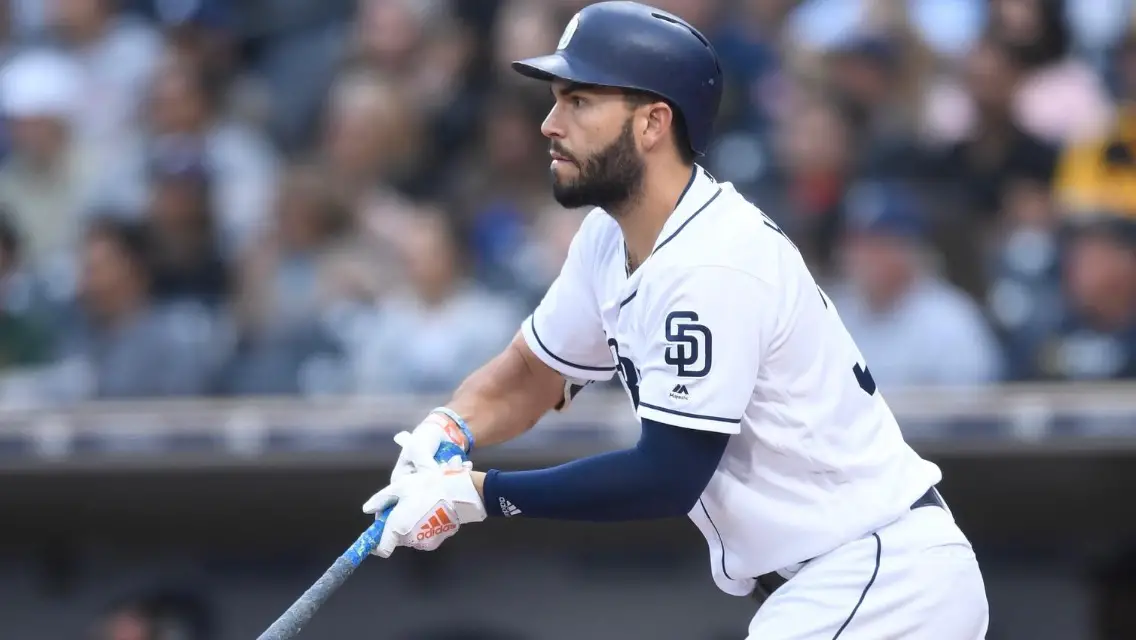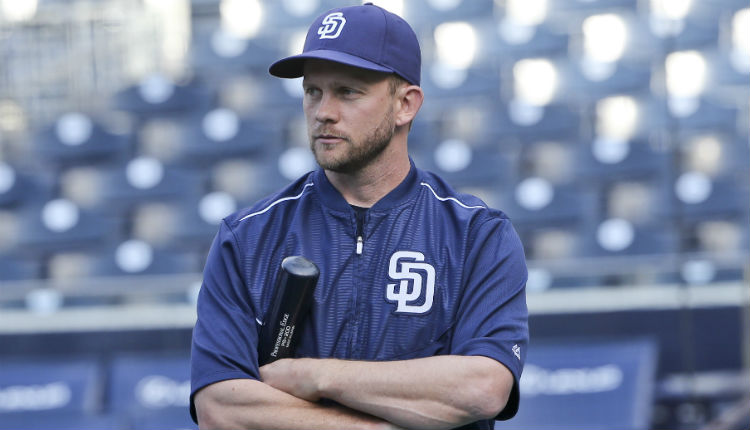The Padres’ 2018 Season By the Numbers

Credit: Padres

Although Padres’ executives only promised a building year (with an indeterminate definition), they had to have expected better results from this team than the worst record in the National League. At 42-63, the Padres dwell in the cellar of the division, 15.5 games back. According to current FiveThirtyEight predictions, San Diego will end the season with a 64-98 record and a -162 run differential, trending down from last year’s 71-91 record.
Only three teams in baseball (the Chicago White Sox, Kansas City Royals, and Baltimore Orioles) have a lower winning percentage than the Padres’ .400. In 2017 the Padres at least had a winning record at home (43-38), but in 51 games at Petco Park this year, the team has won only 20 games.
A close look at the numbers in every facet of the game tells the season’s story, as well as the Padres’ current place in the baseball continuum. In most offensive stats, the team ranks in the bottom six: 27th in runs per game at 3.60, 27th in home runs per game 0.85, 29th in RBI per game at 3.47, 30th in sacrifice fly balls at 0.17, 30th in total bases per game at 12.2, 28th in extra base hits at 7.0 percent.
Currently, the Padres’ batting line looks like this: .232/.296/.365. Perhaps the most alarming trend has been in on-base percentage, as the team had focused on improving in that area during the off-season. Matt Stairs, the newest in a long line of batting coaches, helped the Phillies improve from .301 to .315 in 2017. But the Padres have actually regressed from .299 (hardly a number to be celebrated).
Before spring training, Stairs told the San Diego Union Tribune’s Kevin Acee that one of his goals was to have the team “’commit to hitting the baseball.’” But a team that ranks 30th in strikeout percentage at 25.5 percent obviously has not gotten the message. Does that mean Stairs should lose his job? Hardly. Firing a hitting coach as an annual ritual has obviously not benefited the team.
On the positive side, the Padres have improved slightly in these measures: hits per game (7.76), doubles per game (1.56), walks per game (2.91), stolen bases per game (0.59), batting average on balls in play (.296), and walk percentage (7.9 percent). However, the slight improvements haven’t moved the team up relative to the rest of the league.
On the pitching side, the team has shown some improvement over last year’s performance. Padres’ pitchers rank 10th in home runs per game at 1.01, down from 1.42; 15th in strikeouts per walk 2.56, up from 2.39; 16th in strikeouts per 9 innings at 8.53, up from 8.34; 17th in team walks per nine at 3.33, down from 3.49; 20th in earned run average 4.35, down from 4.67; 21st in walks plus hits per innings pitched at 1.349, down from 1.378.
This exercise began because of my gut feeling that this team’s performance did not seem like an improvement over last year’s. Perhaps, I thought, it was just my growing impatience with losing a lot more than winning, thus, the necessity to check the numbers. Unfortunately, the figures don’t lie and neither did my gut feelings.
Yes, we have the top-rated farm system that appears to be loaded with talent. However, teams, like large ships, rarely turn on a dime. Can a team obviously trending down in performance actually improve enough in two or three years to contend for anything?
Baseball has been a part of Diane’s life since her father played professionally (mostly at the minor league level). She has written for a number of publications and concentrated on companion animal welfare. She welcomes the opportunity to write about the sport she loves. Diane shares her home with her husband and a house full of rescued animals.
Now that they have a handful of legitimate prospects as high as AA I wouldn’t want the Padres to deviate too much from the plan and trade for a mid-rotation type pitcher like Archer who appears to already be on the downside of his career.
Good article, and the issue has to be raised. The answer to your question is no, this team cannot be expected to contend anytime soon.
There are some good points: a lot of talent in the minors, and some promising talent on the ML team – mainly Margot turning around his season.
All franchises build a winning team through the same 3 means: draft and development, trades and FA signings. SD has seemingly done well at the first, but has totally crapped out at the last two.
There are exciting players available, but what does Preller do? Signs Hosmer, trades Hand for yet another catcher, and ponders trading for a so-what player in Archer. Does he know his team’s record, or the stats you cited? When even Buster Olney gets it (http://www.espn.com/mlb/story/_/id/24190353/buster-olney-archer-thor-heck-padres-thinking ), why doesn’t our GM?
I partially disagree with you on the draft and development. Yes, they have drafted well but they are still prospects.
Development? When is the last time the Padres developed a home grown hitter or a pitcher? Tony Gwynn and Jake Peavy? Luis Urias looks to be the real deal. Austin Allen seems to be the real deal too. Dinelson Lamet had an impressive rookie year and Joey Luchessi is having an impressive rookie year.
I really hope that the Padres do not trade any of their top home grown prospects, especially those with an above average hit tool! I would rather they wait to see how these prospects (Logan Allen, Chris Paddack, Jacob Nix, Josh Naylor, Fernando Tatis Jr,, Francisco Mejia, etc.) perform at the MLB level before acquiring a key player or two (for a playoff/championship push) either through free agency or a trade.
What ever happened to trusting the process? I guess I should have seen the writing on the wall when they signed Eric Hosmer.
Yes, in signing Hosmer AJ Preller went from “trusting the process” to “derailing the process.” It would be fine to invest in/trade for an actual stud, but Hosmer and Archer are anti-studs. The Padres have around 10 or so pitchers in the farm system (e.g. Allen; Paddack; Luchessi; etc) that will do as well, if not far better than Archer will over the next 3 years.